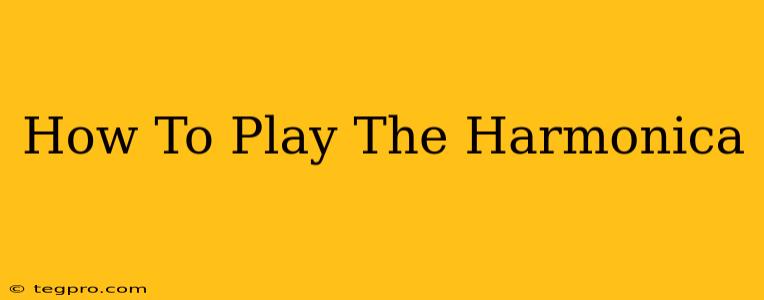The harmonica, also known as a mouth organ, is a deceptively simple instrument with a rich and expressive sound. Its portability and relatively easy learning curve make it a popular choice for beginners and seasoned musicians alike. This guide will walk you through the fundamentals of playing the harmonica, helping you take your first steps towards making music.
Getting Started: Choosing Your Harmonica
Before you even think about blowing, you'll need a harmonica! There are many types available, but for beginners, a diatonic harmonica in the key of C is a great starting point. This key offers a wide range of notes and is commonly used in many genres of music. Don't be tempted to buy a cheap, poorly made instrument; a slightly more expensive, well-constructed harmonica will be far easier to play and sound better.
What to Look For in a Harmonica:
- Material: Harmonicas are typically made of plastic or wood. Plastic is more durable and generally less expensive.
- Construction: Look for a harmonica with tightly fitting reeds and a solid body to prevent air leaks.
- Reed Quality: The reeds are the heart of the harmonica, so ensure they are responsive and produce a clear tone.
Basic Harmonica Techniques: Breathing and Embouchure
The core of harmonica playing lies in your breathing technique and embouchure (the way you hold the harmonica in your mouth).
Mastering Your Breath:
- Inhalation (Drawing in air): Use a gentle, controlled inhalation to produce a clear sound. Avoid sucking too hard, which can lead to a raspy or distorted tone.
- Exhalation (Blowing air): Similar to inhalation, exhale with control. Avoid blowing too forcefully; a steady, even flow of air is key.
Finding Your Embouchure:
Proper embouchure is crucial for accurate note production. Here's how to find yours:
- Hold the harmonica: Hold the harmonica gently between your lips. Don't clamp down too tightly.
- Experiment: Experiment with the placement of your mouth. Try covering different holes, and notice how the sound changes.
- Find the sweet spot: You’ll find a comfortable position where notes sound clear and distinct. This will take practice and patience!
Playing Your First Notes: The Blow and Draw
The harmonica's holes produce different notes depending on whether you blow or draw air through them.
Blow Holes:
Blow gently into the holes to produce a note. Start with holes 1-4.
Draw Holes:
Draw air gently through the holes to produce a different note. Again, start with holes 1-4.
Simple Harmonica Songs and Exercises
Once you've mastered the basics, you can start learning simple songs and exercises. Many online resources offer tabs and tutorials for beginner-level harmonica songs. Start with simple melodies and gradually increase the complexity as you improve.
Practicing Regularly:
Consistent practice is essential for improvement. Even short, regular practice sessions are more effective than infrequent long ones. Start with 15-20 minutes a day and gradually increase the duration as you become more comfortable.
Expanding Your Harmonica Skills
Once you feel confident with basic techniques, you can explore more advanced concepts like:
- Bending: This technique involves altering the pitch of a note by changing your embouchure and breath control.
- Tongue Blocking: This is a more advanced technique for playing multiple notes simultaneously.
- Different Harmonica Keys: Exploring different keys will expand your musical possibilities.
Learning the harmonica is a journey, not a race. Be patient with yourself, practice regularly, and most importantly, have fun! With dedication and persistence, you’ll soon be enjoying the rewarding experience of creating music with this versatile instrument.

